Fall in Ohio is full of color. Don’t let your yard be the one thing that looks dull. With the right plants, your garden can stay vibrant long after summer ends. You don’t need a total overhaul, just a few smart picks that thrive in colder weather.
1. Chrysanthemums (Hardy Mums)
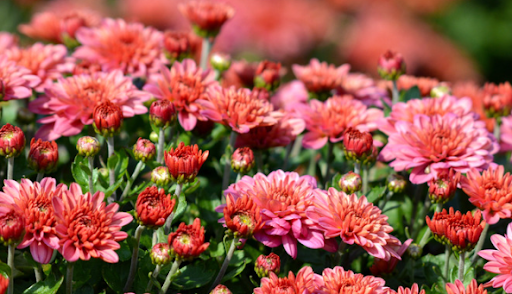
Mums are a fall favorite. They bloom just when summer plants are starting to fade. You’ll see them in rich shades of red, gold, purple, and white. They handle frost well and last for weeks. Plant them in the sun with well-drained soil, and they’ll give you solid colors deep into the season.
2. Sedum ‘Autumn Joy’ (Stonecrop)
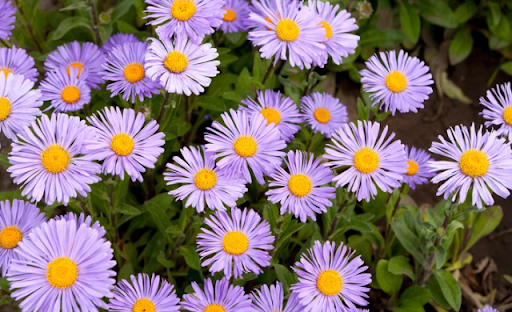
Sedum is a tough plant that blooms into fall. The pink flower clusters turn coppery red as the weather cools. It’s drought-tolerant and low maintenance, great for garden beds and borders.
3. Asters
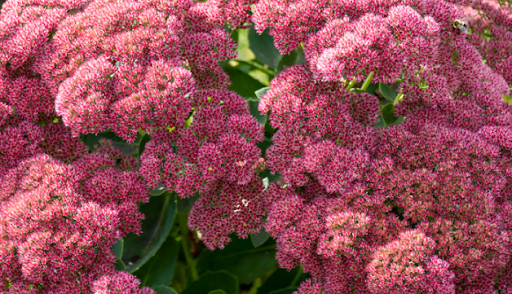
Asters offer cool-season colors in purple, pink, and blue. They bloom late and attract pollinators like bees and butterflies. These plants prefer full sun and good drainage. Since many varieties are native to Ohio, they’re built to handle the local weather and soil.
4. Japanese Anemone
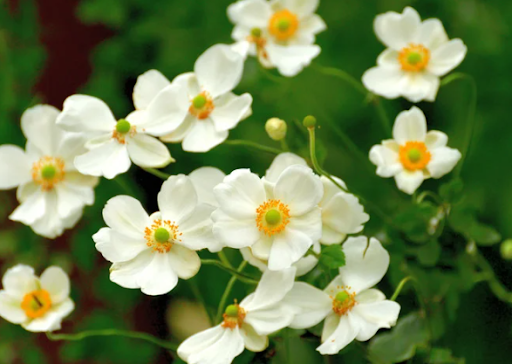
This graceful flower blooms late, with soft white or pink petals. It grows tall and works well in light shade or partial sunlight. If you have a woodland-style garden or want something soft near a border bed, this is a smart choice. It spreads slowly, so it does not compete with other plants for space
5. Pansies and Violas
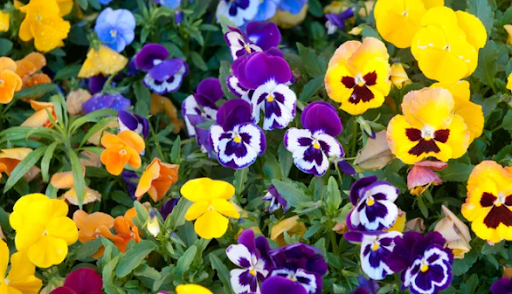
These little flowers are perfect for containers, borders, or window boxes. They handle light bits of frost and cooler temps well. They’re especially nice in early fall and often hold on into November. Choose rich jewel tones or soft pastels and either way, they’ll make the beds look more beautiful.
6. Ornamental Kale & Cabbage
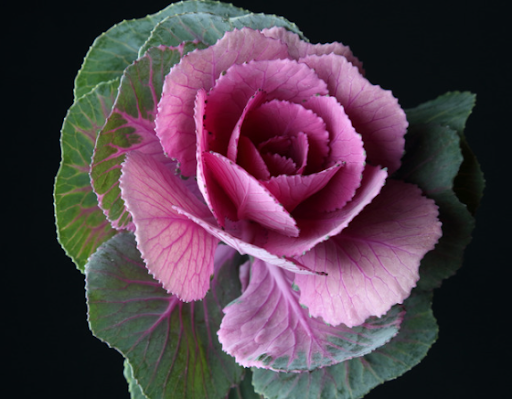
These colorful plants don’t bloom, but their colors of purple, white, and green are eye-catching. As it gets colder, the colors get even brighter. They look great in pots or as front-row plants in garden beds. Since they tolerate frost, they’ll stick around year-round.
7. Goldenrod & Helenium
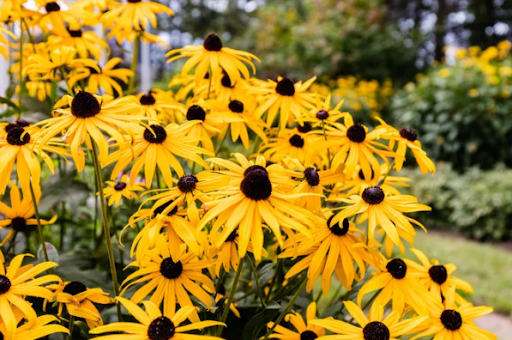
These are bold, bright choices for mid to late fall. Goldenrod brings tall sprays of yellow flowers, while helenium offers reds and oranges. Together, they make a great backdrop for smaller perennials or grasses. They’re also good for bees and butterflies, even late in the season.
8. Black-Eyed Susan & Coneflowers
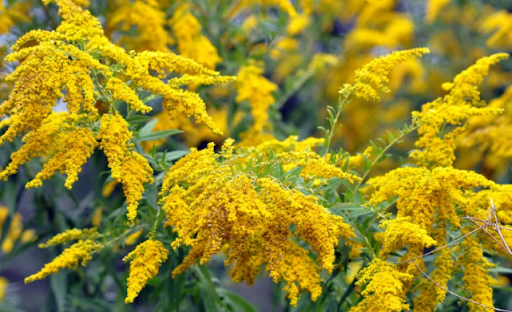
These are Ohio native favorites that bloom well into fall. Black-eyed Susans have golden petals and dark centers. Coneflowers, especially the purple varieties, offer a softer look. Both attract pollinators and tolerate weather changes. They’re easy to grow, even for beginners.
9. Coral Bells (Heuchera)
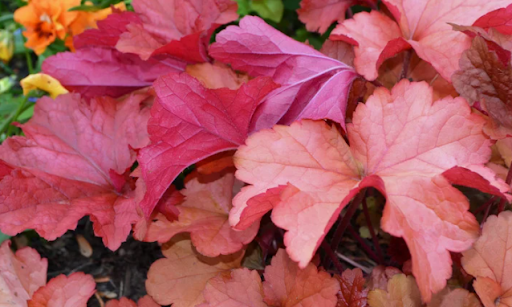
Coral bells are grown more for their leaves than their flowers. The leaves come in shades of bronze, purple, lime, and even deep red. They hold their shape through fall and into winter, especially with a layer of mulch. They work in sun or in the shade and pair well with ferns and grasses.
10. Muhly Grass (Hairawn Muhly)
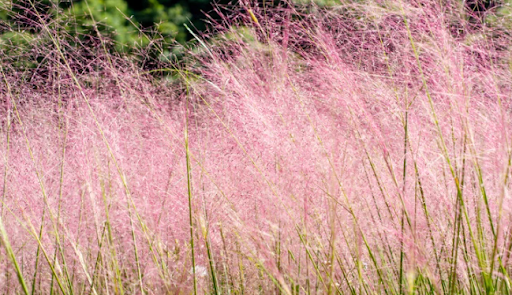
Muhly grass forms soft, airy plumes in shades of pink or purple that seem to float above its green base. These wispy blooms catch the fall light beautifully and create movement in the landscape. It’s low-maintenance and drought-tolerant, making it a good pick for sunny garden beds or as an accent in native plantings.
Honorable Mentions
- Alliums: While alliums are technically spring bloomers, they need to be planted in the fall. These bulbs develop underground through winter and bloom in late spring with globe-shaped flowers.
- Sweet Alyssum: This low-growing annual produces tiny, fragrant flowers that last through early frost. It makes a great filler plant and thrives in cooler weather.
- Calendula: Calendula gives you bright orange and yellow daisy-like blooms in the cooler months. It’s easy to grow and is sometimes called “pot marigold.”
- Snapdragons: These tall, spiky flowers bring vibrant color to the fall garden. Snapdragons thrive in cooler temperatures and often rebloom after summer heat fades.
- Strawflower: Known for its papery petals, strawflower adds long-lasting colors even after picking. It’s one of the most reliable annuals for late fall.
Planting Tips for Ohio Gardens
Planting in Ohio during the fall requires a few simple steps to give your garden its best look. Here’s what works well for Northeast Ohio’s climate and soil:
- Know Your Frost Dates: In much of Northeast Ohio, the first frost usually happens between mid-October and early November. Aim to get fall plants in the ground 6 to 8 weeks before that, so they have time to root.
- Use Well-Drained Soil: Fall rain can quickly lead to soggy conditions. Mix compost or soil conditioner into your beds to improve drainage and prevent root rot.
- Water After Planting: Even in cooler weather, new plants need a good start. Water deeply after planting and keep the soil moist for the first 1 to 2 weeks.
- Add Mulch for Protection: A 2 to 3-inch layer of mulch helps insulate roots, retain moisture, and prevent weeds. It’s especially important as nights cool down.
- Choose the Right Spot: Some fall plants need full sun, while others prefer partial shade. Check the plant tag and match the location to its needs. This keeps them thriving with less effort.
- Don’t Overcrowd: Fall plants still need space for air flow. Give them room to grow without sitting on top of each other. This prevents disease and allows good air circulation.
- Watch the Weather: If a cold snap is coming, cover newly planted flowers overnight with fabric or a garden blanket. This can help protect tender blooms from early frost damage.
What Makes Fall a Great Planting Season in Ohio
Fall might seem like the end of the growing season, but it’s actually one of the best times to plant in Ohio. Here’s why:
- Warm soil supports root growth: Even as the temperatures drop, the soil stays warm from summer. That helps new plants develop strong, deep roots.
- Cooler air reduces plant stress: Lower daytime temperatures mean plants are less likely to wilt or suffer from heat. This helps them settle in more easily.
- Consistent rainfall helps establish plants: Fall tends to bring more steady rain, which keeps the soil moist without overwatering.
- Fewer pests and weeds: As the season winds down, many bugs and weeds slow their growth. That gives your plants less competition and fewer threats.
- Head start for spring: Perennials, trees, and shrubs planted in the fall have time to develop underground. When spring arrives, they’ll be healthier and grow faster.
How to Layer Fall Plants for Maximum Impact
A layered layout adds structure, color depth, and a more natural feel to your fall garden. Here’s a simple way to do it:
- Start with tall plants at the back: Use upright or structural plants like goldenrod, ornamental grasses, or coneflowers. These create a backdrop and add height.
- Place medium-height plants in the middle: Fill in the center with plants like Japanese Anemone, Sedum ‘Autumn Joy’, or Coral Bells. They provide color and volume without blocking the view.
- Add low growers up front: Plant your beds with short and spreading plants like pansies, violas, alyssum, or ornamental kale. These plants soften edges and add texture.
- Repeat your groupings: Stick to 3 to 5 plant types and repeat them throughout your space for a more unified and intentional look.
- Mix textures and colors: Pair bold flowers with fine-leafed plants or mix soft pinks with rich purples and golds. This makes your garden feel full and balanced.
This simple structure helps guide your eye across the space and makes each plant stand out, even as the season shifts.
Frequently Asked Questions
Q: Can I plant in containers for fall?
A: Yes. Containers are perfect for fall. Use compact plants like pansies, ornamental cabbage, and violas. Just make sure the pots have good drainage and don’t dry out too fast
Q: How can I keep my garden looking good into late fall?
A: Choose a mix of perennials, grasses, and cold-hardy annuals. Cut back summer plants, refresh mulch, and add some fall color up front.
Q: Can I use these plants in containers?
A: Yes. Pansies, kale, violas, and even mums do well in pots. Just water them regularly and protect containers from freezing.
Q: Can I plant perennials and bulbs at the same time?
A: Yes. Fall is ideal for both. Perennials establish roots before winter, while bulbs (like alliums or tulips) stay dormant underground until spring. Just be sure to follow depth guidelines and water after planting. A layer of mulch helps protect them from early freezes.
Q: Will frost kill my fall flowers?
A: Some tender plants may fade after frost, but hardy varieties like pansies, kale, and mums often survive several light frosts without a problem.
Contact Unique Landscaping
Fall in Ohio doesn’t mean your garden has to look dull. With the right plants, you can keep things blooming and beautiful well into the season.
Start with one or two of the plants on this list and build from there. Small updates like adding a few mums or swapping out tired summer annuals can make a big difference.
And if you’re not sure where to begin, Unique Landscaping is here to help. We design and install fall gardens built for Ohio’s seasons. Contact us for a free consultation.
